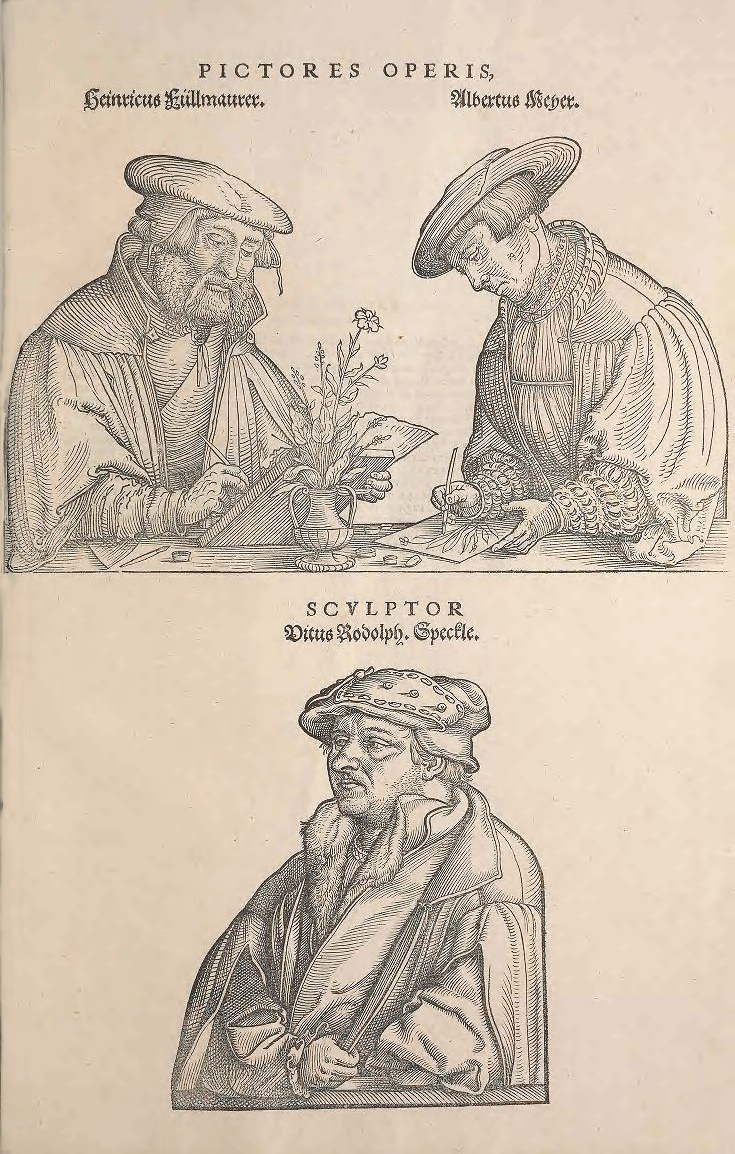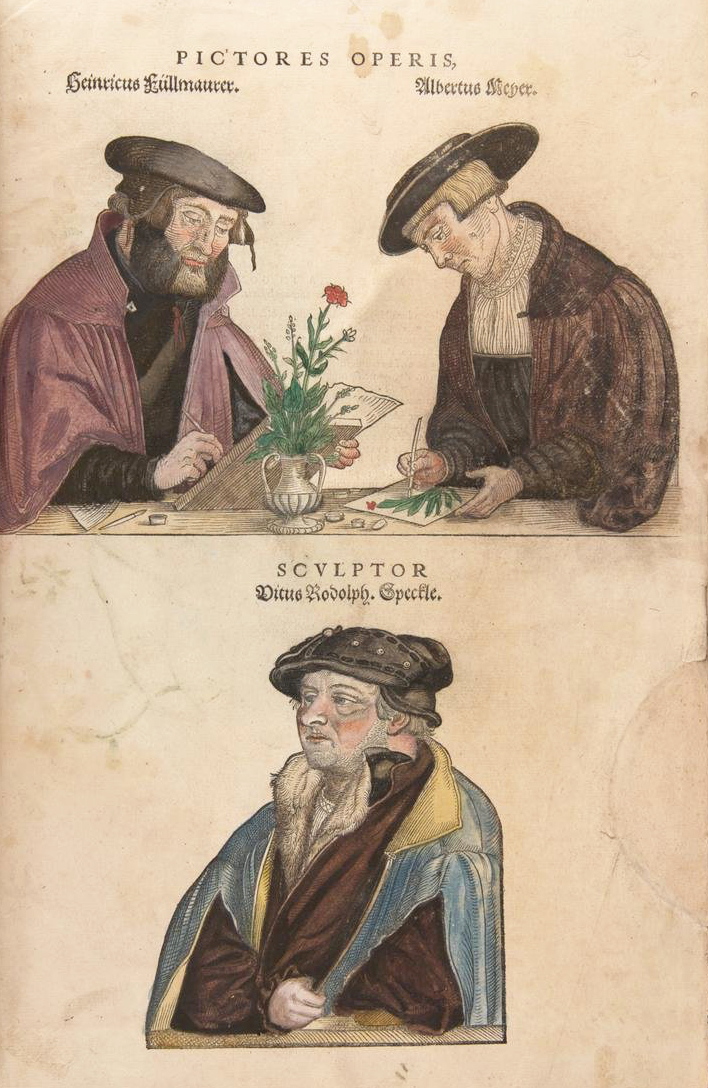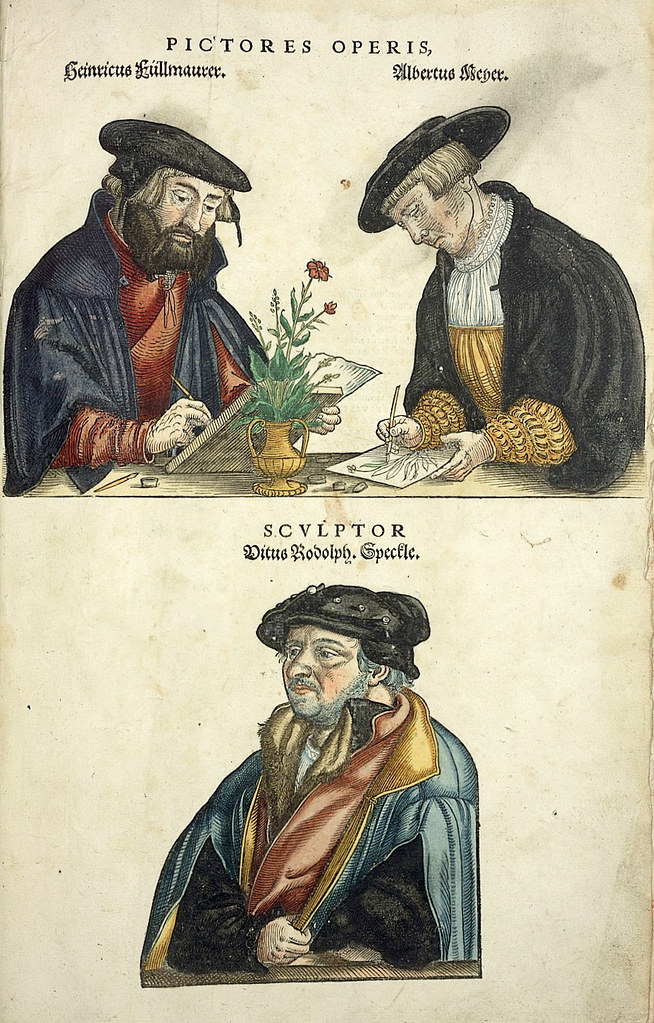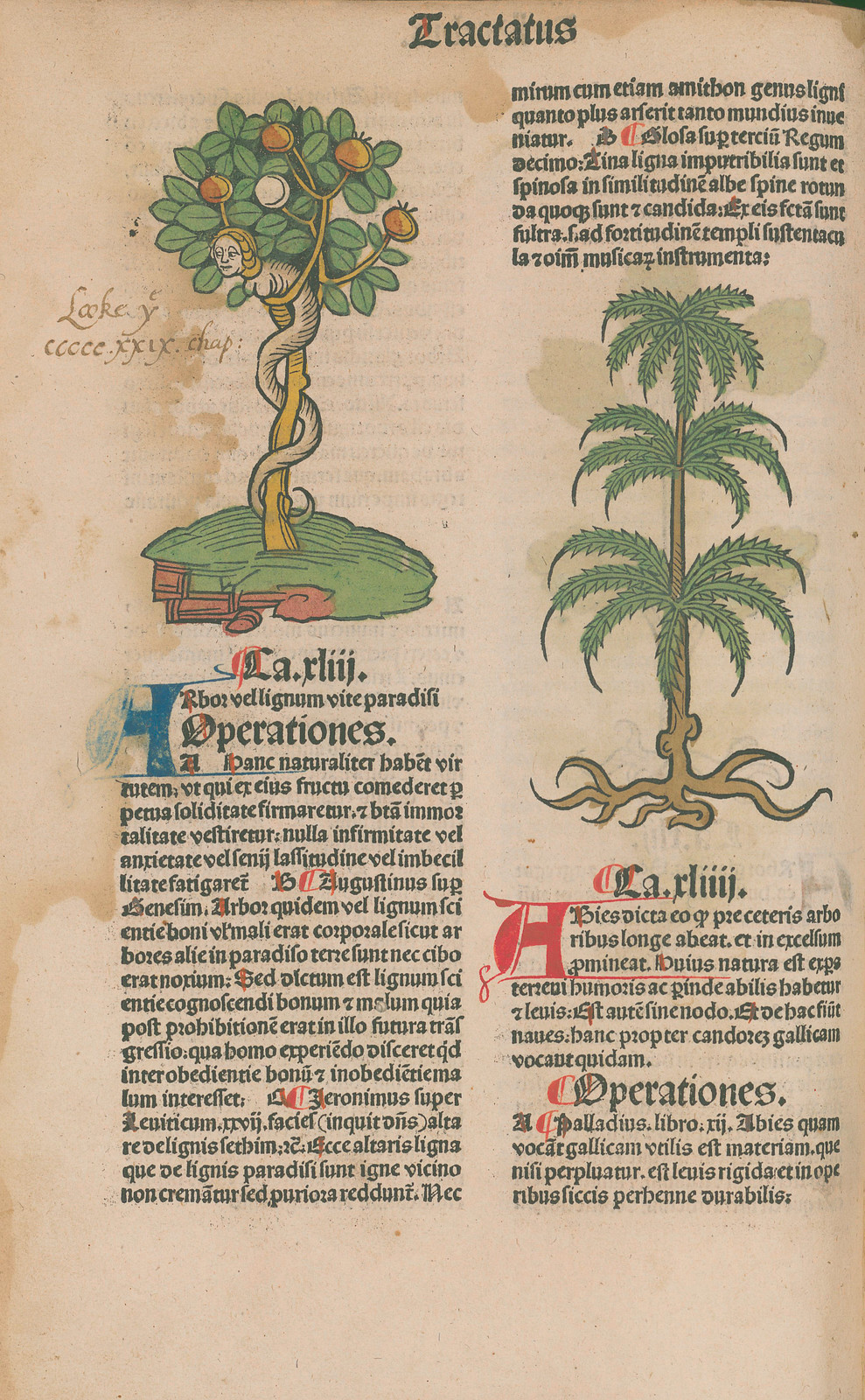Filling in the Blanks: A Prehistory of the Adult Coloring Craze
Its dizzy heights may have passed, but the fad for adult coloring books is far from over. Many trace the origins of such publications to a wave of satirical colouring books published in the 1960s, but as Melissa N. Morris and Zach Carmichael explore, the existence of such books, and the urge to colour the printed image, goes back centuries.
 Uncolored portraits of the artists involved in the production of Leonhart Fuchs’ De historia stirpium commentarii insignes— Source.
Uncolored portraits of the artists involved in the production of Leonhart Fuchs’ De historia stirpium commentarii insignes— Source.
For many publishers around the world 2015 was, fiscally speaking, an excellent year — a welcome boost in an otherwise uncertain decade. But this upturn had a perhaps surprising source: coloring books for grown-ups. What strange winds conspired to suddenly urge adults in their droves to take up colored pencils again? Whatever the reasons, sales rocketed: Nielsen logged sales of 12 million for the category in 2015, up from a measly 1 million the year before. In February 2016, with the craze still going strong, New York Academy of Medicine Library gave birth to a new initiative called Color Our Collections Week, a scholarly take on the coloring trend. Now in its third year, the campaign sees, on the first week of February, archives, special collections, and libraries take to social media with individual images and even entire books compiled from their holdings for the public to color. While these chosen works are all in the public domain, and so can technically include (in the US at least) works published up until 1924, the images in these coloring books more typically hail from the fifteenth through eighteenth centuries. And it is in these images — published in the centuries prior to the advent of color printing — that we can see a precedent for this seemingly modern fad. While it may seem like simply jumping on the adult coloring bandwagon, Color Our Collections Week, with its naturally historical focus, is actually tapping into (and shedding light on) a tradition much older.
Last year, the New York Academy of Medicine Library chose an image from Leonhart Fuchs’ monumental 1542 botanical work, De historia stirpium commentarii insignes (“Notable Commentaries on the History of Plants”), to promote the event. An archivist from the History of Science Collections at the University of Oklahoma chimed in on Twitter to say their own copy of this book had already been colored in.

The page from the University of Oklahoma’s colored version of Leonhart Fuchs’ De historia stirpium commentarii insignes— Source
Another colored Edition of Leonhart Fuchs’ De historia stirpium commentarii insignes — Source (Wellcome Library)
Should we be surprised by this? Color Our Collections Week might give the impression that these images, from the era before colored printing, are at last being colored — rescued from their hitherto drab monochrome existence. Yet printed images from the early modern period were regularly colored by hand.
The practice goes back to the earliest days of print in the fifteenth century. Artists, printers, booksellers, consumers, and readers all applied color to originally black-and-white images. Before Gutenberg’s innovation of the moveable-type press, both woodblock and engraved prints, single sheets with printed images, were popular in Germany and parts of Central Europe. They were used in various ways, and many people did what we might do with them — hung them on the walls of their home.
With the emergence of the printed book the coloring trend continued. Colored illustrations were common in medieval manuscript books, most notably in the intricately illuminated manuscripts produced by monastic institutions. The early printed books from the fifteenth century and after often imitated the textual design and illustrations of these medieval manuscript books. Indeed, illuminated manuscripts and printed books were not mutually exclusive: some printed books contain illumination, while some manuscripts have painted prints pasted into them. It would seem that at least some early printers and readers attempted to create color illustrations for these works the only way they knew how: by coloring the pictures themselves.

This
1493 herbal shows how early printed works imitated manuscripts — Source (Wellcome Library) Pages: 1 · 2 · 3 · 4
Culture and Arts, Art and Museums, History, Culture Watch, Gift Shopping, Shop for Yourself, Interests, Senior Women Web, Articles, Sightings, What's New
More Articles
- Julia Sneden Wrote: Love Your Library
- Rebecca Louise Law: Awakening on View at Honolulu Museum of Art
- GAO Report, Older Households: Comparison of Income, Wealth, and Survival in the United States with Selected Countries
- Annandale-on-Hudson, New York ... With Pleasure: Pattern and Decoration in American Art 1972 - 1985
- Lynn Hershman Leeson: Who Has Celebrated Her 80th Birthday and a New Exhibition, TWISTED, at The New Museum in New York City
- The Scout Report: Penn and Slavery Project, Robots Reading Vogue, Open Book Publishers, Black History in Two Minutes & Maps of Home
- Explore the Royal Collection and an Exhibition, Masterpieces From Buckingham Palace
- In the We Couldn't Resist Category: Just Icing on the Cake, Part One, by Roberta McReynolds
- The Autobiography of a Garden at The Huntington, a Joy for Viewers and Gardeners
- GAO: COVID-19 Complicates Already Challenged FDA Foreign Inspection Program; It Could Be 2 to 3 Years Before New Staff Are Experienced Enough To Conduct Foreign Inspection
 Uncolored portraits of the artists involved in the production of Leonhart Fuchs’ De historia stirpium commentarii insignes— Source.
Uncolored portraits of the artists involved in the production of Leonhart Fuchs’ De historia stirpium commentarii insignes— Source.









 This 1493 herbal shows how early printed works imitated manuscripts —
This 1493 herbal shows how early printed works imitated manuscripts —